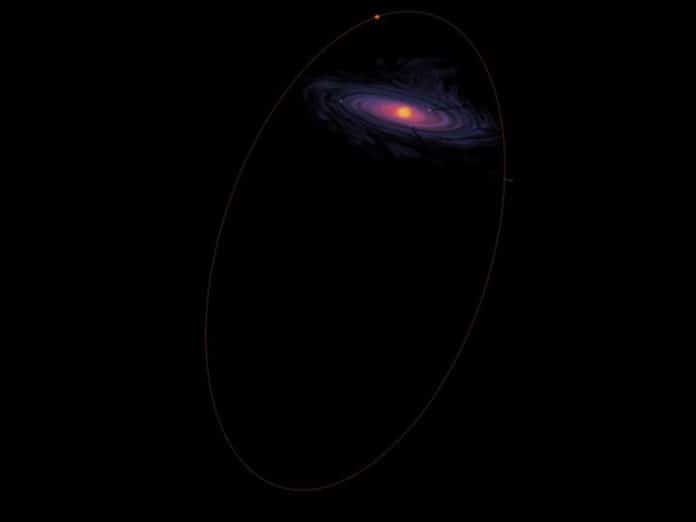The Solar System formed 4.5 billion years ago in a stellar nursery, with its systems of planets and asteroids. The stars were sufficiently close to one another to foster strong gravitational interactions that prompted an exchange of material among the stars.
Some objects now in the Solar System should, in this manner, have conformed to different stars. Until now, in any case, scientists were unable to recognize caught interstellar objects and objects that conformed to the Sun. We made the initial recognizable proof in 2018.
Recently, scientists from the São Paulo State University’s Institute of Geosciences and Exact Sciences (IGCE-UNESP) in Rio Claro, Brazil, have discovered 19 asteroids of interstellar origin classified as Centaurs, outer Solar System objects that revolve around the Sun in the region between the orbits of Jupiter and Neptune.
The first detected asteroid was the asteroid 514107 Ka’epaoka’awela, as reported by Agência FAPESP in 2018. The name Ka’epaoka’awela is Hawaiian and can be roughly translated to “mischievous opposite-moving companion of Jupiter.” It has occupied the path corresponding to Jupiter’s orbit for at least 4.5 billion years but revolves around the Sun in the direction opposite to that of the planets, i.e., it is a retrograde co-orbital asteroid of Jupiter.
Maria Helena Moreira Morais, one of the two co-authors, said, “When we identified it as an object that came from outside the Solar System, we didn’t know whether it was an isolated case or part of a vast population of immigrant asteroids. In this latest study, we recognized 19 Centaurs of interstellar origin.”
Like Ka’epaoka’awela, the Centaurs found to have highly inclined orbits concerning the orbital plane of the planets.
To investigate the origin of these objects, scientists built a computer simulation that works like a time machine, running their trajectories backward by 4.5 billion years. The simulation aided scientists in finding where these objects were at that time.
The simulation showed that 4.5 billion years ago, these objects revolved around the Sun in orbits perpendicular to the disk’s plane. Also, they did so in a region distant from the gravitational effects of the original disk.
Both findings have shown that the Centaurs did not originally belong to the Solar System. Also, it must have been captured from nearby stars during the period of planet formation.
Morais said, “The discovery in the Solar System of a population of asteroids of interstellar origin is a major step in the understanding of the differences and similarities between objects that formed in the Solar System and objects in the Solar System that were originally extrasolar. Future astronomic observations and possibly space missions will deepen this understanding.”
“Studies of this population will bring to light information about the star nursery from which the Sun emerged, the capture of interstellar objects in the primordial Solar System, and the importance of the interstellar matter to the chemical enrichment of the Solar System.”
Journal Reference:
- F Namouni et al. An interstellar origin for high-inclination Centaurs. DOI: 10.1093/mnras/staa712
